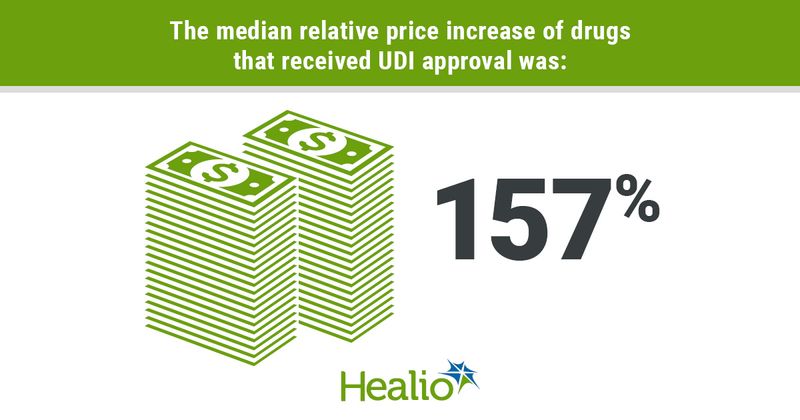FDA’s Unapproved Drug Initiative decreased market competition
The Unapproved Drug Initiative, which aimed to incentivize manufacturers to obtain legacy approval for drugs already on the market, resulted in higher prices and less competition, according to researchers.
“In 2006, the FDA launched the Unapproved Drug Initiative (UDI) to document supporting data for several thousand drugs that had remained on the U.S. market continually since before the agency began reviewing safety and effectiveness in 1938,” Simon J. Gunter, MPhil, an MD candidate at Harvard Medical School, and colleagues wrote. “As an incentive, the FDA offered market exclusivity to the first manufacturer to receive approval of a legacy drug.”

The FDA ended the initiative in November 2020, “citing concerns that the program raised prices without generating new clinical data for most drugs,” according to the researchers.
To assess the long-term effects of the initiative, Gunter and colleagues identified UDI-approved drugs from January 2006 to June 2020, determined market exclusivity through July 2020 and identified the number of manufacturers marketing the drugs as well as the average price before and 5 years after UDI approval.
The researchers found that 21 drugs received UDI approval. The median exclusivity period was 3.42 years; 11 drugs had an exclusivity period of 3 or more years. There were therapeutically similar but not interchangeable generic versions of 13 drugs; among these, the median time of full exclusivity was 0.64 years and partial exclusivity was 2.02 years.
Among eight self-administered drugs, the median number of manufacturers declined from 5.5 before UDI approval to 3 after 5 years. The number of manufacturers of six drugs decreased, according to the researchers. The price of five drugs increased; the median relative increase was 157%.
“Our analysis raises concerns about market exclusivity periods as an incentive for such regulatory programs,” the researchers wrote. “Another contributing factor to market disruption was that many subsequent drug formulations were not approved as interchangeable generic versions; expanding the ability of pharmacists to substitute similar products could improve competition.”
